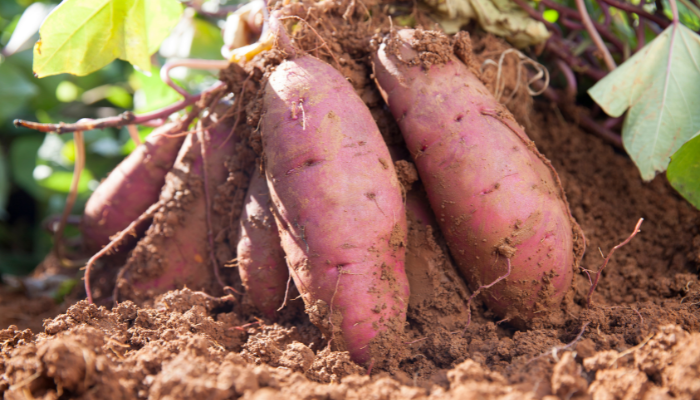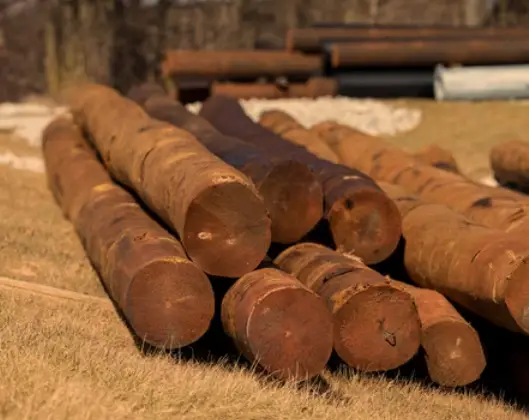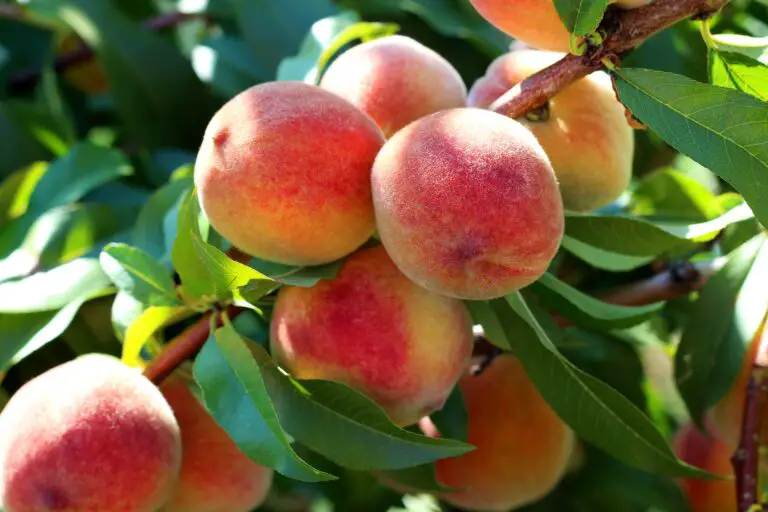Growing Petunias in Pots: Tips and Tricks for a Colorful Container
Petunias are one of the most popular and versatile flowers for containers. They come in a wide range of colors, shapes, and sizes, and they can bloom from spring to fall with proper care. Whether you want to add some color to your porch, balcony, or patio, or create a stunning hanging basket, growing petunias in pots is easy and rewarding. Here are some tips on how to grow petunias in pots successfully.
Choose the Right Pot and Potting Mix
The first step to growing petunias in pots is to choose a suitable container and potting mix. Petunias prefer well-drained, moist soil, so avoid using garden soil or heavy potting mixes that can retain too much water and cause root rot. Instead, use a lightweight, porous potting mix, such as Yates Potting Mix with Dynamic Lifter, which contains organic matter and slow-release fertilizer to nourish your plants.
The size and shape of the pot will depend on the type and number of petunias you want to grow. Generally, you should choose a pot that is at least 200 mm wide and deep, and has drainage holes at the bottom. You can also use hanging baskets, window boxes, or other creative containers, as long as they provide enough space and drainage for your plants.
Sow the Seeds or Plant the Seedlings
You can grow petunias from seeds or seedlings, depending on your preference and availability. If you want to grow petunias from seeds, you can sow them directly into the pot by pressing them lightly into the mix and watering well. Petunia seeds are very small and need light to germinate, so do not cover them with soil. Keep the pot in a warm and bright place, and keep the soil moist but not soggy. The seeds should sprout within 10 to 21 days.
If you want to grow petunias from seedlings, you can buy them from a nursery or garden center, or start them indoors from seeds about six to eight weeks before the last frost date in your area. To transplant the seedlings into the pot, make sure the soil is moist and gently loosen the roots. Dig a hole in the potting mix that is slightly larger than the root ball, and place the seedling in the hole. Fill the hole with soil and press it firmly around the stem. Water the plant well and remove any damaged or dead leaves.
Place the Pot in a Sunny Spot

Petunias love the sun and need at least six to eight hours of direct sunlight per day to produce abundant and vibrant blooms. Place the pot in a sunny spot, such as a south-facing window, a balcony, or a patio. If you live in a very hot and humid climate, you may want to provide some afternoon shade to prevent the flowers from fading or wilting. You can also move the pot indoors or to a sheltered area during extreme weather conditions, such as heavy rain, strong wind, or frost.
Water and Fertilize Regularly

Petunias are fairly drought-tolerant, but they still need regular watering to keep the soil moist and prevent the flowers from dropping. Water the pot whenever the top inch of the soil feels dry to the touch, and avoid wetting the foliage and flowers, as this can cause fungal diseases. Water deeply and slowly, until the water drains out of the bottom of the pot. You can also use a saucer under the pot to catch the excess water and prevent it from staining the surface.
Petunias are also heavy feeders and need regular fertilizing to maintain their growth and flowering. Apply a slow-release fertilizer, such as Yates Black Magic Seed Raising Mix, at the time of planting, and then follow up with a liquid fertilizer, such as [Yates Thrive Flower & Fruit Soluble Fertiliser], every two weeks during the growing season. Follow the instructions on the label for the correct dosage and application method.
Prune and Deadhead as Needed
Petunias can grow quickly and become leggy or scraggly over time, especially if they are not getting enough sun or nutrients. To keep your petunias in pots looking neat and tidy, prune them back by about one-third every four to six weeks, or whenever they start to look overgrown or sparse. This will encourage new growth and branching, and make your plants bushier and fuller.
You should also deadhead your petunias regularly, which means removing the faded or wilted flowers as soon as they appear. This will prevent the plants from setting seeds and wasting energy, and stimulate more blooms throughout the season. You can use your fingers or a pair of scissors to pinch or cut off the spent flowers, along with the seed pod behind them.
Enjoy Your Blooming Petunias
With these simple steps, you can grow petunias in pots successfully and enjoy their colorful and cheerful flowers for months. Petunias are easy to care for and can complement any style or theme of your container garden. You can mix and match different varieties and colors of petunias, or combine them with other annuals or perennials that have similar growing requirements. Petunias are also great for attracting pollinators, such as bees, butterflies, and hummingbirds, to your garden. So, what are you waiting for? Start growing petunias in pots today and brighten up your space with their beauty and fragrance.
Table Showing How to Grow Petunia in Pot
| Step | Description | Tips |
|---|---|---|
| Choose the right pot and potting mix | Use a lightweight, porous potting mix, such as Yates Potting Mix with Dynamic Lifter, and a pot that is at least 200 mm wide and deep, and has drainage holes. | You can also use hanging baskets, window boxes, or other creative containers. |
| Sow the seeds or plant the seedlings | You can sow the seeds directly into the pot by pressing them lightly into the mix and watering well, or you can buy or start the seedlings indoors and transplant them into the pot. | Petunia seeds are very small and need light to germinate, so do not cover them with soil. |
| Place the pot in a sunny spot | Petunias need at least six to eight hours of direct sunlight per day to produce abundant and vibrant blooms. Place the pot in a sunny spot, such as a south-facing window, a balcony, or a patio. | If you live in a very hot and humid climate, you may want to provide some afternoon shade to prevent the flowers from fading or wilting. |
| Water and fertilize regularly | Water the pot whenever the top inch of the soil feels dry to the touch, and avoid wetting the foliage and flowers. Apply a slow-release fertilizer, such as Yates Black Magic Seed Raising Mix, at the time of planting, and then follow up with a liquid fertilizer, such as [Yates Thrive Flower & Fruit Soluble Fertiliser], every two weeks during the growing season. | Follow the instructions on the label for the correct dosage and application method. |
| Prune and deadhead as needed | Prune the petunias back by about one-third every four to six weeks, or whenever they start to look overgrown or sparse. This will encourage new growth and branching, and make your plants bushier and fuller. Deadhead the petunias regularly, which means removing the faded or wilted flowers as soon as they appear. This will prevent the plants from setting seeds and wasting energy, and stimulate more blooms throughout the season. | You can use your fingers or a pair of scissors to pinch or cut off the spent flowers, along with the seed pod behind them. |
FAQ on How to Grow Petunia in Pots
Q: What are the best varieties of petunias for pots?
A: There are many varieties of petunias that can grow well in pots, but some of the most popular ones are:
- Wave petunias: These are trailing petunias that can spread up to 4 feet and create a stunning cascade of flowers. They are ideal for hanging baskets, window boxes, or large containers.
- Supertunias: These are hybrid petunias that are more vigorous, disease-resistant, and heat-tolerant than regular petunias. They can grow up to 2 feet tall and wide, and produce large and colorful blooms. They are suitable for medium to large containers, or mixed with other plants.
- Calibrachoa: These are also known as million bells, and they look like miniature petunias. They have smaller but more abundant flowers, and they come in a variety of colors and patterns. They are perfect for small to medium containers, or as a filler or spiller in mixed plantings.
Q: How often should I water my petunias in pots?
A: The frequency of watering your petunias in pots will depend on the weather, the size of the pot, and the type of potting mix you use. A general rule of thumb is to water the pot whenever the top inch of the soil feels dry to the touch. You can also check the weight of the pot, and water it when it feels light. Water deeply and slowly, until the water drains out of the bottom of the pot. Avoid overwatering or underwatering your petunias, as both can cause problems such as root rot, wilting, or dropping of flowers.
Q: How do I prevent pests and diseases from affecting my petunias in pots?
A: The best way to prevent pests and diseases from affecting your petunias in pots is to provide them with good growing conditions, such as adequate sun, water, fertilizer, and air circulation. You should also inspect your plants regularly for any signs of infestation or infection, and remove any damaged or diseased parts. Some of the common pests and diseases that can affect petunias are:
- Aphids: These are small, sap-sucking insects that can cluster on the stems, leaves, or buds of your petunias. They can cause distortion, yellowing, or curling of the foliage, and transmit viral diseases. You can control them by spraying your plants with a strong jet of water, or using insecticidal soap or neem oil.
- Spider mites: These are tiny, spider-like creatures that can spin fine webs on the undersides of the leaves of your petunias. They can cause stippling, bronzing, or drying of the leaves, and reduce the flowering. You can control them by increasing the humidity around your plants, or using miticides or horticultural oil.
- Powdery mildew: This is a fungal disease that can cause a white, powdery coating on the leaves, stems, or flowers of your petunias. It can reduce the vigor and beauty of your plants, and make them more susceptible to other problems. You can control it by avoiding overhead watering, pruning any infected parts, and applying fungicides or baking soda spray.
Q: How do I make my petunias in pots last longer?
A: Petunias are annuals, which means they complete their life cycle in one year. However, you can make your petunias in pots last longer by following these tips:
- Prune and deadhead your petunias regularly, to encourage new growth and flowering, and prevent them from becoming leggy or scraggly.
- Fertilize your petunias every two weeks during the growing season, to provide them with the nutrients they need to thrive and bloom.
- Protect your petunias from extreme weather conditions, such as heavy rain, strong wind, or frost, by moving them indoors or to a sheltered area.
- Save the seeds or cuttings of your petunias, and sow or propagate them for the next season.
Q: Can I grow petunias in pots indoors?
A: Yes, you can grow petunias in pots indoors, as long as you provide them with enough light, water, and fertilizer. You should place your petunias in a sunny spot, such as a south-facing window, where they can receive at least six to eight hours of direct sunlight per day. You should also water and fertilize your petunias as you would outdoors, and prune and deadhead them as needed. You may also want to use a humidifier or a pebble tray to increase the humidity around your petunias, as indoor air can be dry and cause the flowers to wilt.
Q: How do I propagate petunias from cuttings?
A: Propagating petunias from cuttings is a simple and fun way to multiply your plants and create new varieties. Here are the steps to propagate petunias from cuttings:
- Choose a healthy and vigorous petunia plant, and cut a 4 to 6 inch stem tip that has at least two or three pairs of leaves. Make sure the cutting is not flowering or budding, as this will divert the energy from rooting.
- Remove the lower leaves from the cutting, leaving only one or two pairs of leaves at the top. You can also dip the cut end of the cutting in a rooting hormone, such as [Yates Clonex Rooting Gel], to speed up the rooting process.
- Fill a small pot with a moist, sterile potting mix, such as [Yates Black Magic Seed Raising Mix], and make a hole in the center. Insert the cutting into the hole, and press the soil firmly around it. Water the cutting well, and cover the pot with a clear plastic bag or a dome to create a mini greenhouse.
- Place the pot in a warm and bright place, but out of direct sunlight. Keep the soil moist but not soggy, and mist the cutting occasionally to prevent it from drying out. The cutting should root within two to four weeks, and you can check the progress by gently tugging on the stem.
- Once the cutting has rooted, you can remove the plastic cover and transplant it into a larger pot or into the garden. You can also pinch off the growing tip of the cutting to encourage branching and bushiness.
Q: How do I grow petunias from seeds?
A: Growing petunias from seeds is another way to start your own plants and enjoy a wider range of varieties. Here are the steps to grow petunias from seeds:
- Choose the seeds of the petunia variety you want to grow, and check the expiry date on the packet. Petunia seeds are very small and delicate, so handle them carefully and store them in a cool and dry place.
- Fill a seed tray or a shallow container with a moist, sterile potting mix, such as [Yates Black Magic Seed Raising Mix], and level the surface. Sprinkle the seeds evenly over the mix, and press them lightly into the mix. Do not cover the seeds with soil, as they need light to germinate.
- Water the seeds gently with a fine mist, and cover the tray or container with a clear plastic wrap or a lid to maintain the moisture and warmth. Place the tray or container in a warm and bright place, but out of direct sunlight. Keep the mix moist but not soggy, and avoid overwatering or underwatering the seeds.
- The seeds should germinate within 10 to 21 days, and you can remove the plastic cover or lid once you see the seedlings emerge. Thin out the seedlings to avoid overcrowding, and keep them in a bright and well-ventilated place. You can also apply a diluted liquid fertilizer, such as [Yates Thrive Flower & Fruit Soluble Fertiliser], every two weeks to boost their growth.
- When the seedlings have developed at least two pairs of true leaves, you can transplant them into individual pots or into the garden. You can also pinch off the growing tip of the seedlings to encourage branching and bushiness.
Q: How do I overwinter my petunias in pots?
A: Overwintering your petunias in pots is a way to save your plants from the cold and frost, and enjoy them again in the next season. Here are the steps to overwinter your petunias in pots:
- Before the first frost, prune your petunias back by about half, and remove any dead or diseased parts. Water the plants well, and let them drain completely.
- Move your petunias indoors, and place them in a cool and bright place, such as a garage, a basement, or a sunroom. Make sure the temperature is between 4°C and 10°C, and the plants receive at least four hours of indirect sunlight per day.
- Water your petunias sparingly, only when the soil feels dry to the touch. Do not fertilize your petunias during the winter, as this will stimulate unwanted growth and flowering.
- Check your petunias regularly for any signs of pests or diseases, and treat them accordingly. You can also prune your petunias lightly to maintain their shape and size.
- When the danger of frost has passed, you can move your petunias outdoors, and gradually acclimate them to the sun and wind. Resume your normal watering and fertilizing schedule, and enjoy your blooming petunias.








